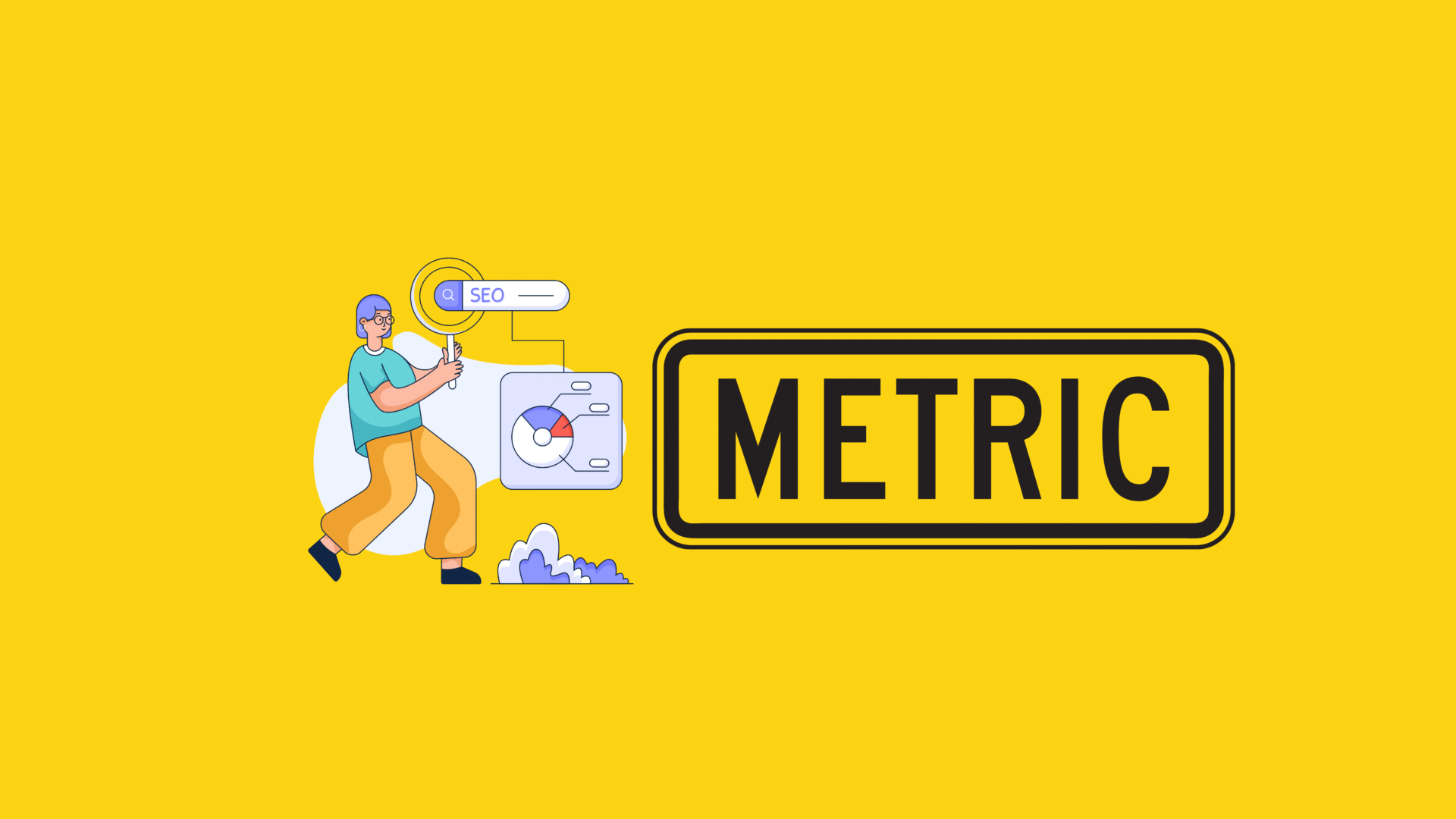In the data-saturated universe of SEO, teams are often inundated with a bewildering list of metrics.
While many indicators genuinely illuminate performance, others fall into the deceptive category of “vanity metrics”.
These numbers may look impressive on a report but fail to translate into tangible business growth or true competitive advantage.
Separating genuine value from misleading hype remains a critical challenge for organizations striving for impactful digital performance.
For business leaders and digital growth professionals, the question becomes:
What is one specific vanity metric in SEO that you consciously steer clear of, despite the persistent hype often generated around it?
This article compiles expert perspectives from those at the forefront of driving real digital results, cutting through the noise to reveal a key metric they actively deprioritize and why focusing on it can be a costly distraction.
Read on!
J. Ivy Boyter - Full Throttle SEO
Impressions.
I always tell my clients that while I’m okay seeing the number of impressions increasing, they mean very little because in Google Search an impression can mean you showed up on page 100.
I don’t know how many people view page 100 of search results but chances are slim to none.

J. Ivy Boyter
Founder, Full Throttle SEO
Darwin Liu - X Agency
At X Agency, we steer clear of obsessing over keyword rankings as a primary SEO metric, despite its persistent hype among many SEO teams. While ranking at the top of Google’s SERP can feel validating, it’s often a vanity metric that doesn’t guarantee business success.
Keyword rankings are misleading because they don’t directly correlate with traffic, engagement, or conversions. For a client’s e-commerce site, we initially chased top rankings for broad, high-volume keywords. While we achieved #1 spot for several terms, Google Analytics showed only a 5% increase in organic traffic and negligible conversion growth, as the keywords lacked specific user intent. Meanwhile, competitors targeting long-tail keywords drove more qualified traffic.
Instead, we focus on metrics that reflect user behavior and business outcomes:
– Organic Traffic Quality: Measured via Google Analytics (Acquisition > Channels), we prioritize traffic from relevant, intent-driven searches.
– Engagement Metrics: Time on page and bounce rate (Audience > Overview) indicate content relevance, guiding our optimization efforts.
– Conversion Rates: Tracked through Goals in Google Analytics, conversions reflect actual business impact, unlike rankings alone.
– Click-Through Rates (CTR): Monitored via Google Search Console, CTR from SERPs shows how compelling our listings are.
By shifting focus, we optimized a client’s site for long-tail, high-intent keywords and improved meta descriptions. This led to a 40% increase in organic traffic, a 30% boost in conversions, and a 15% higher CTR within four months, despite lower rankings for some broad terms.
We also leveraged featured snippets, which drove 25% more clicks than top rankings for competitive keywords.
To avoid the keyword ranking trap, we advise SEO teams to:
Prioritize user intent over rank position using tools like AnswerThePublic.
Track actionable metrics in Google Analytics and Search Console.
Test content performance with A/B testing to refine relevance.
At X Agency, we focus on metrics that drive real results, ensuring SEO strategies align with business goals rather than chasing fleeting vanity rankings.

CEO, X Agency
Aquibur Rahman - Mailmodo
To track link-building success, we go beyond just counting backlinks, we measure impact, not just input.
Our process starts by tagging link-building URLs in analytics and monitoring key metrics: organic traffic lift, keyword movement, and assisted conversions.
One metric we love? Link velocity to ROI, how quickly a backlink drives measurable value. Because in the end, a great link isn’t just a vote of confidence, it’s a growth trigger.

Aquibur Rahman
CEO, Mailmodo
Robert Downey - Simply Be Found
One vanity metric I steer clear of is total website traffic.
It’s one of the most overhyped metrics in SEO—and one of the most misleading. I’ve seen sites with tens of thousands of monthly visitors that generate zero leads or sales. Why? Because the traffic wasn’t local, intent-driven, or aligned with the business’s actual service areas.
At Simply Be Found, we focus on visibility that converts.
That means prioritizing calls, direction requests, form fills, and booked services over raw page views. Especially in local SEO, it’s not about how many people visit your site—it’s about how many of the right people find you when they need you.
We’ve helped businesses with “low” traffic outperform competitors simply because they rank in the right place—like Google Maps, voice assistants, or niche directories—where buying decisions actually happen.
We use tools like our Google Business Profile Boost and AI SEO Pixel to help improve discoverability and conversions in those high-intent zones.
My advice? Don’t chase traffic for the sake of traffic. Chase clarity, consistency, and local authority. SEO isn’t about vanity—it’s about visibility that drives real-world action.

Co-Founder, Simply Be Found
Andrew Peluso - What Kind Of Bug Is This
The most significant vanity metric I avoid is Domain Authority (DA).
At What Kind of Bug Is This, I used to obsess over it — checking Moz scores to decide if a backlink was “good enough” or if a competitor’s site was “stronger.”
However, DA isn’t a Google metric, and it doesn’t indicate how well a page ranks or converts. I once spent weeks chasing a backlink from a DA 80 health site, only to realize it drove zero traffic and had no topical connection to pest control. Meanwhile, a DA 18 local blog drove leads because it was hyper-relevant and trusted in the community.
Now, I care about real signals: organic traffic to the referring page, contextual relevance, and what the anchor text tells Google. I’d rather get 10 clicks from a relevant source that speaks our language than 1,000 impressions from a domain that looks impressive but does nothing.
If you’re building links based on a third-party score, you’re measuring trust with someone else’s ruler. Focus on visibility, not vanity. That’s where the real SEO gains come from.

Founder, What Kind Of Bug Is This
Mohammed Kamal - Olavivo
Organic traffic volume is often misinterpreted as a key indicator of SEO success, but it does not guarantee business results like conversions or revenue.
A high volume can mislead teams into believing their efforts are effective, ignoring user intent and traffic quality. For example, a website may attract many visitors through broad keywords, yet if those visitors don’t engage or convert, the traffic is meaningless.

Mohammed Kamal
Business Development Manager, Olavivo
Vick Antonyan - Humble Help
Domain Authority scores from third-party tools are the biggest vanity metric trap. I’ve seen businesses with DA 20 consistently outrank competitors with DA 50+ simply because they focused on user intent and content quality.
Google doesn’t use these proprietary metrics, so why should you base strategy on them? Instead, track actual organic traffic growth, click-through rates, and conversion metrics that directly impact revenue.

CEO, Humble Help
Aubrey Yung
One vanity metric I steer clear of, despite the ongoing hype in the SEO world, is Domain Authority (DA) or Domain Rating (DR).
From a business perspective, it’s largely irrelevant. Clients don’t care if their DR is 43 or 57 — they care about leads, revenue, and visibility in front of the right audience. DA/DR doesn’t tell you if you’re reaching your actual market or converting users; it’s just a number generated by third-party tools with their own formulas.
What’s more frustrating is how different tools have different names and scores for the same idea — Moz calls it Domain Authority, Ahrefs calls it Domain Rating, SEMrush uses Authority Score — and none of them reflect anything Google actually uses in its ranking systems.
Despite this, many SEO agencies still use it as a sales tactic: “We got your DR from 12 to 32!” But what does that really mean? You can buy spammy links and fake your way up the scale without any real-world results. It’s a metric that’s easy to manipulate, but hard to act on in a meaningful way.
You can’t attribute an increase in traffic or sales to a 1-point rise in DR. Compare that to actual performance data — like rankings, clicks, or conversions — where you can measure, test, and optimize.
That’s why I focus on metrics that tie directly to outcomes, not arbitrary scores that make for flashy reports but don’t move the needle.

SEO Manager, Aubrey Yung
Matias Rodsevich - PRLab
One SEO metric I’ve stopped caring about is bounce rate.
It sounds important, but without context, it’s misleading. A high bounce rate on a blog post doesn’t mean it failed, it might mean the user found exactly what they needed, fast. I’d rather track how long someone stays on the page or if they come back later through branded search.
Instead of chasing a “perfect” bounce rate, I focus on engagement and outcome: did the content answer the query, prompt a next step, or earn a backlink? Those are better signs that the SEO is actually working. Bounce rate looks nice on a dashboard, but it rarely tells the full story.

Founder & CEO, PRLab
Darcy Cudmore - RepuLinks
Organic traffic gets too much attention in SEO.
It looks good in reports. It moves up the charts. It gives teams something to point to. But the numbers are often misleading. More visitors don’t always mean more value. I’ve seen content attract thousands of views without a single result that matters. No leads. No sales. No engagement. Traffic grew, but the business didn’t move. That’s not success. That’s a distraction.
The focus stays on volume instead of intent. Most teams push content for popular keywords to drive visibility, but miss who they’re attracting.
Broad traffic rarely converts. A blog ranking for a general term draws interest, not action. Niche, intent-focused keywords bring in fewer clicks, but stronger results. Content aimed at decision-makers works harder than content made to go viral.
Skip the vanity. Watch user behavior. Measure how people move through your site. Prioritize time on the page, click paths, conversions, and form submissions. These show impact. These drive business. Organic traffic without action is noise. Keep the signal. Cut the rest.

Darcy Cudmore
Founder, RepuLinks
On behalf of the BoostMyDomain community of readers, we thank these leaders and experts for taking the time to share valuable insights that stem from years of experience and in-depth expertise in their respective niches.
BoostMyDomain invites you to share your insights and contribute to our authoritative publication. Reach a wider audience, build your credibility, and establish yourself as a thought leader in an industry that caters to every business with an online presence!
